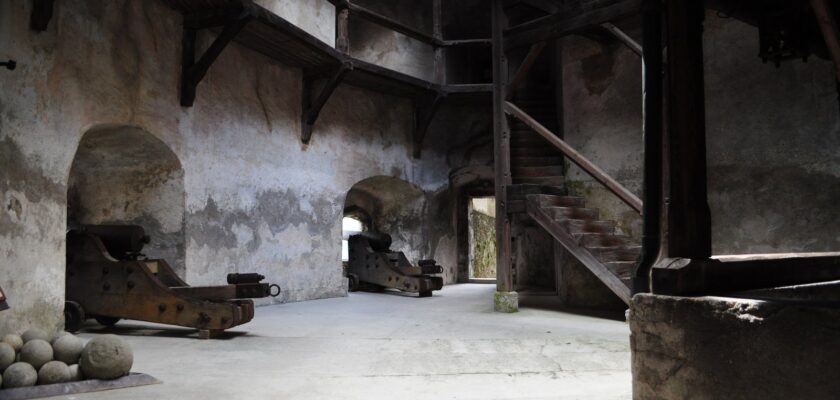Hohenwerfen Castle (Festung Hohenwerfen)
Hohenwerfen is a castle located in Austria at the top of 155 meters above the valley of the Salzach River, 40 km from Salzburg. The castle looks completely impregnable, like an eagle’s nest. This castle looks especially advantageous from the side of the Werfen. Below flows the Salzach River, which gave its name to the famous Salzburg.
It must be said that Hohenwerfen perfectly fulfilled its tasks to protect the Salzburg lands. Especially since these lands are located between the two inaccessible mountain ranges of the Ten and the Hagen mountains. The only way to cross these mountains is through the Lueg Pass. In this strategic point the inhabitants of the Salzburg valley have been defending themselves for many centuries.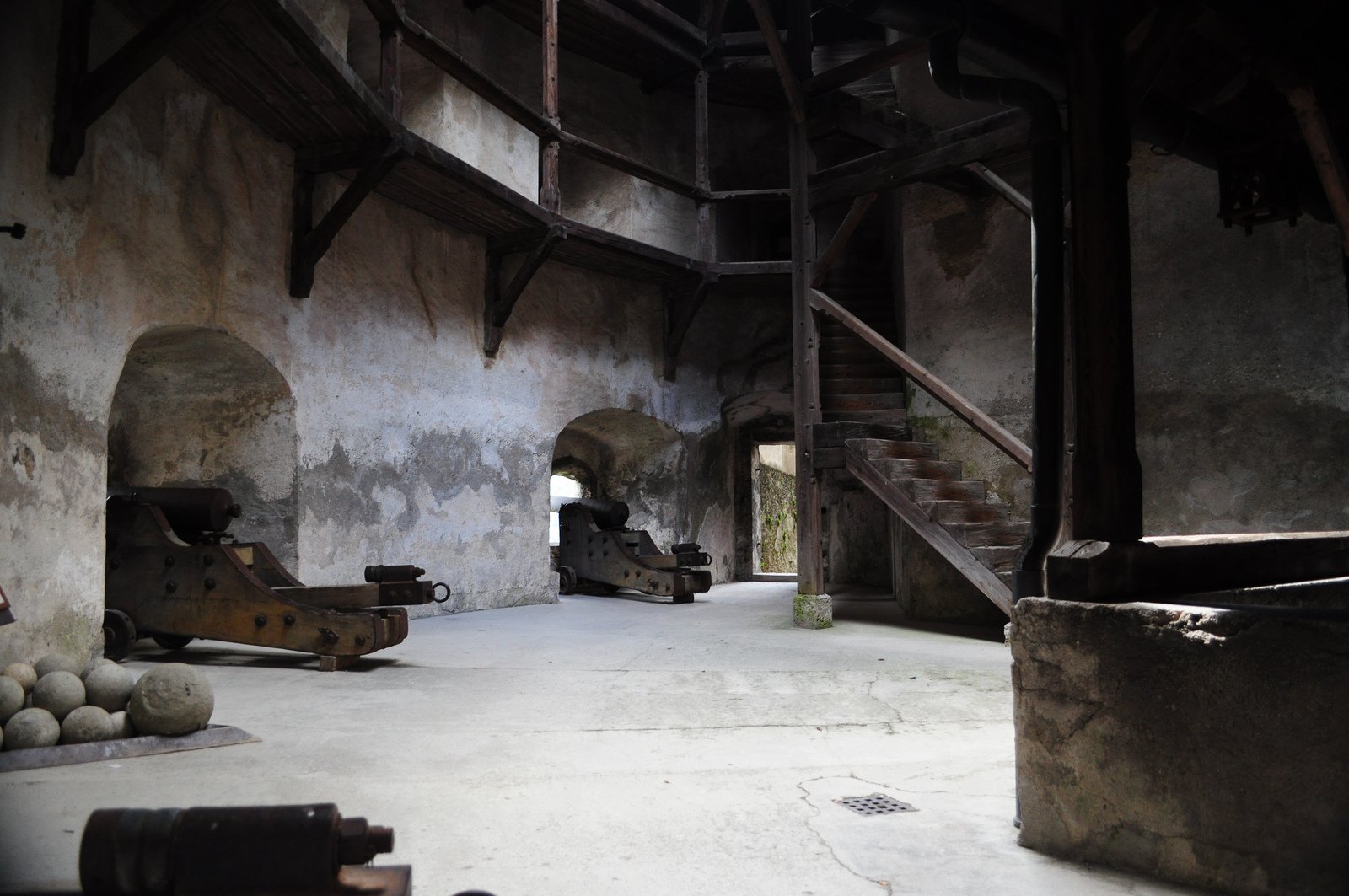
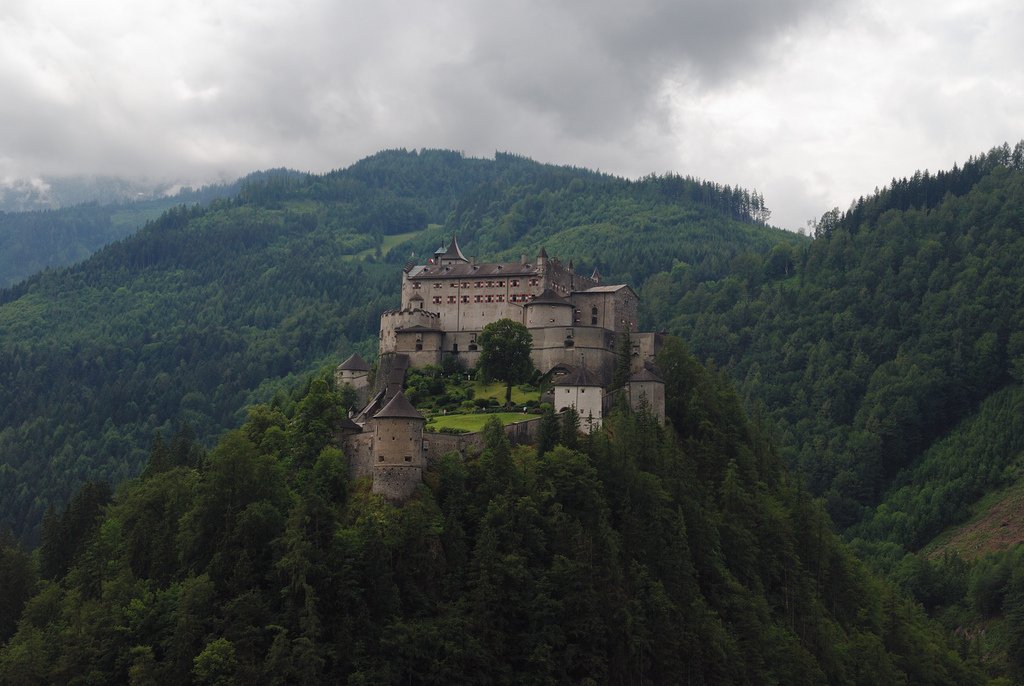
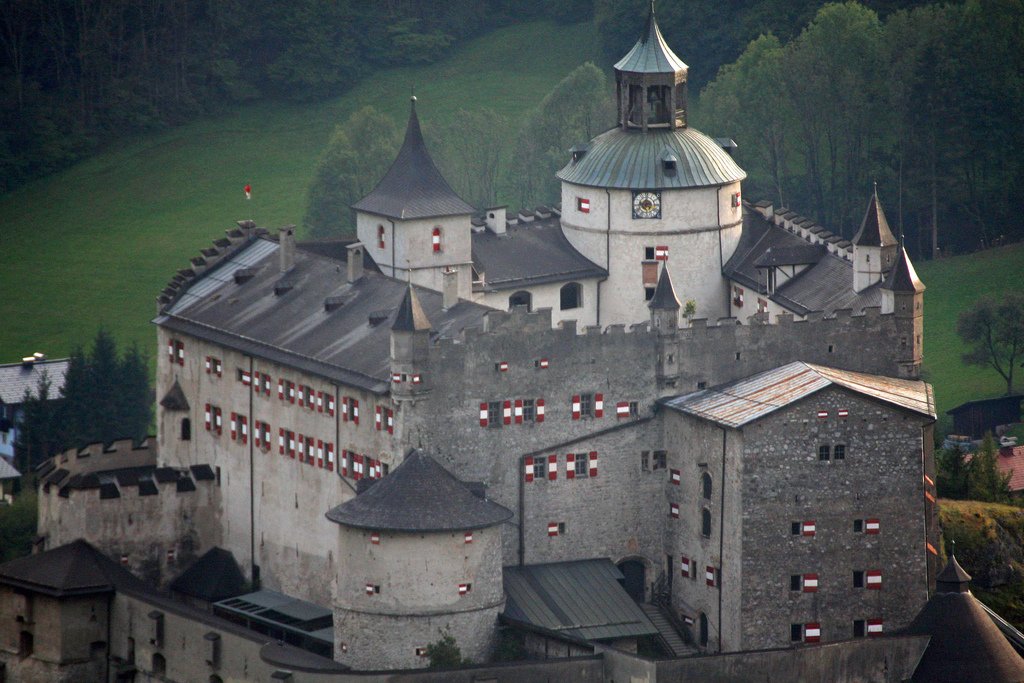
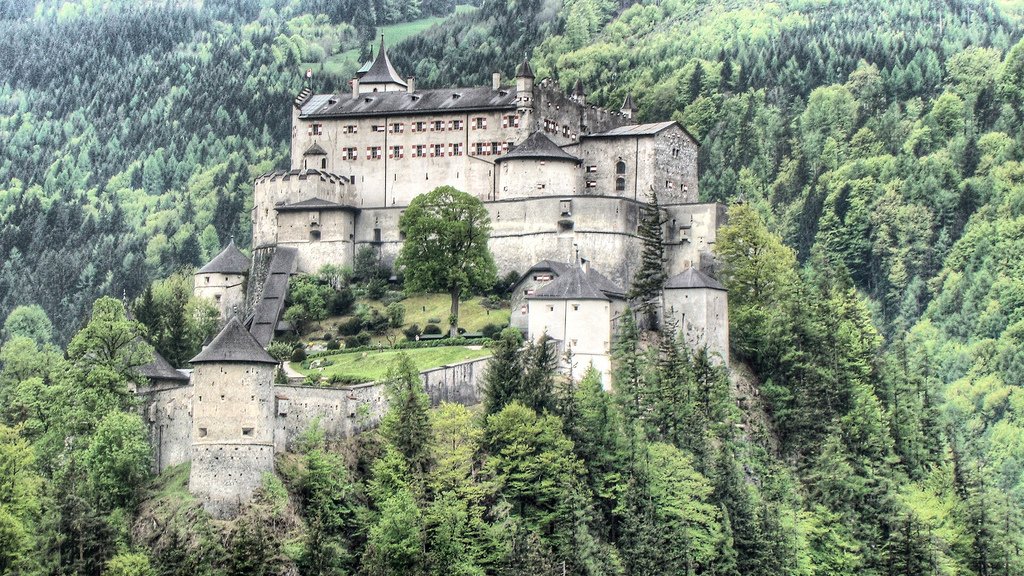
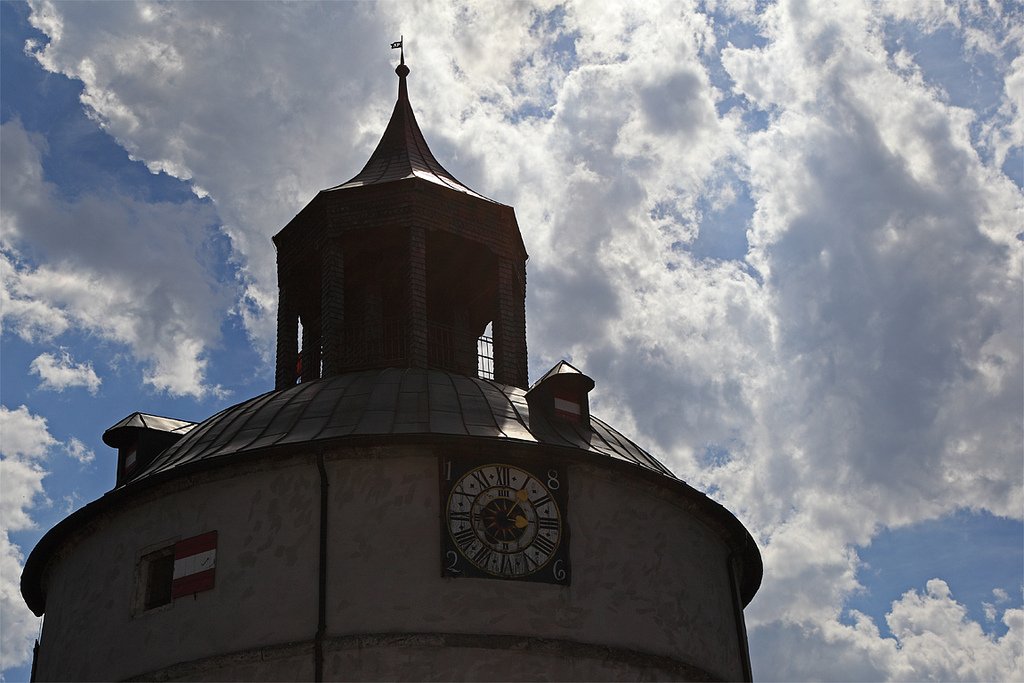
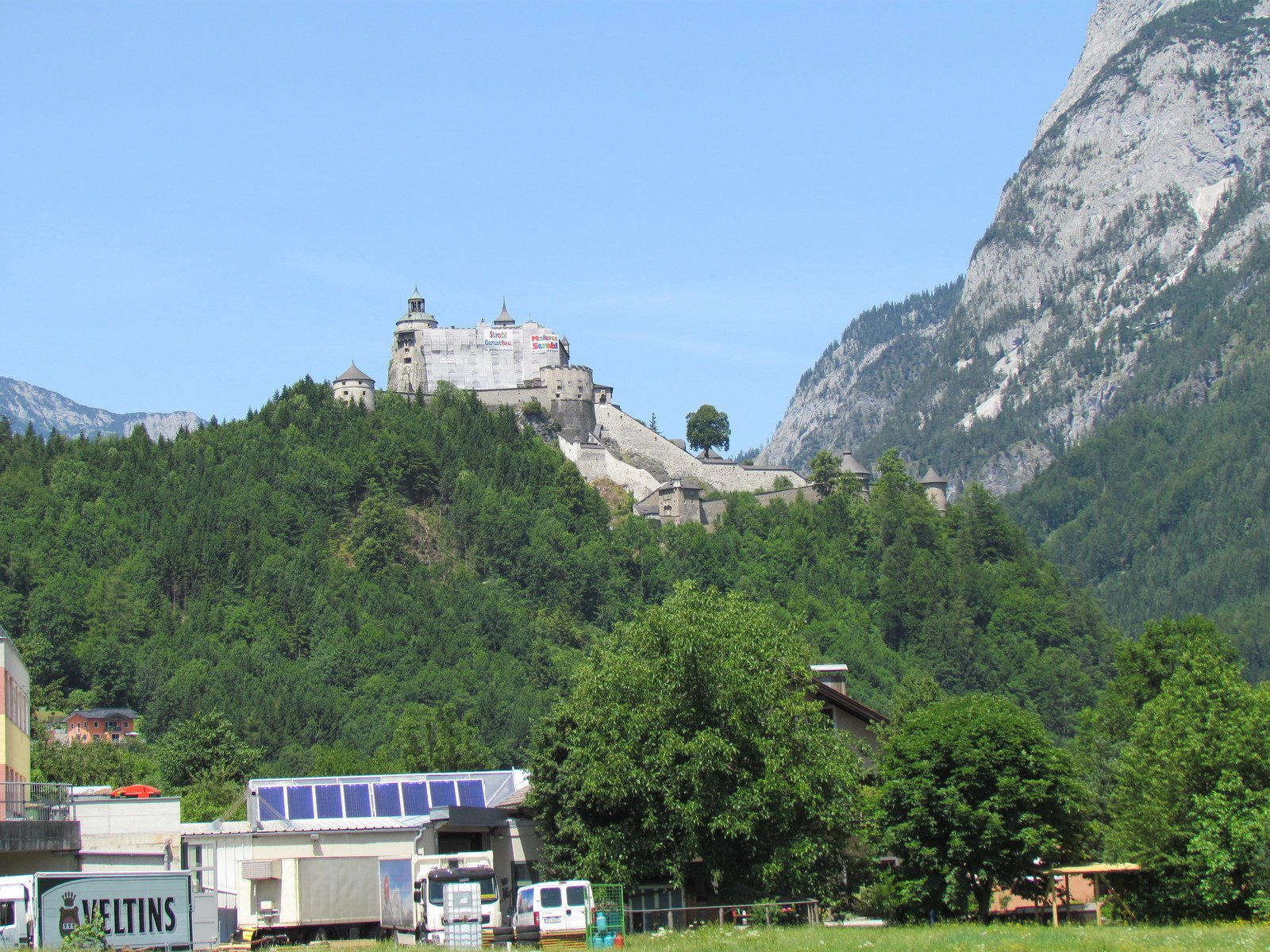
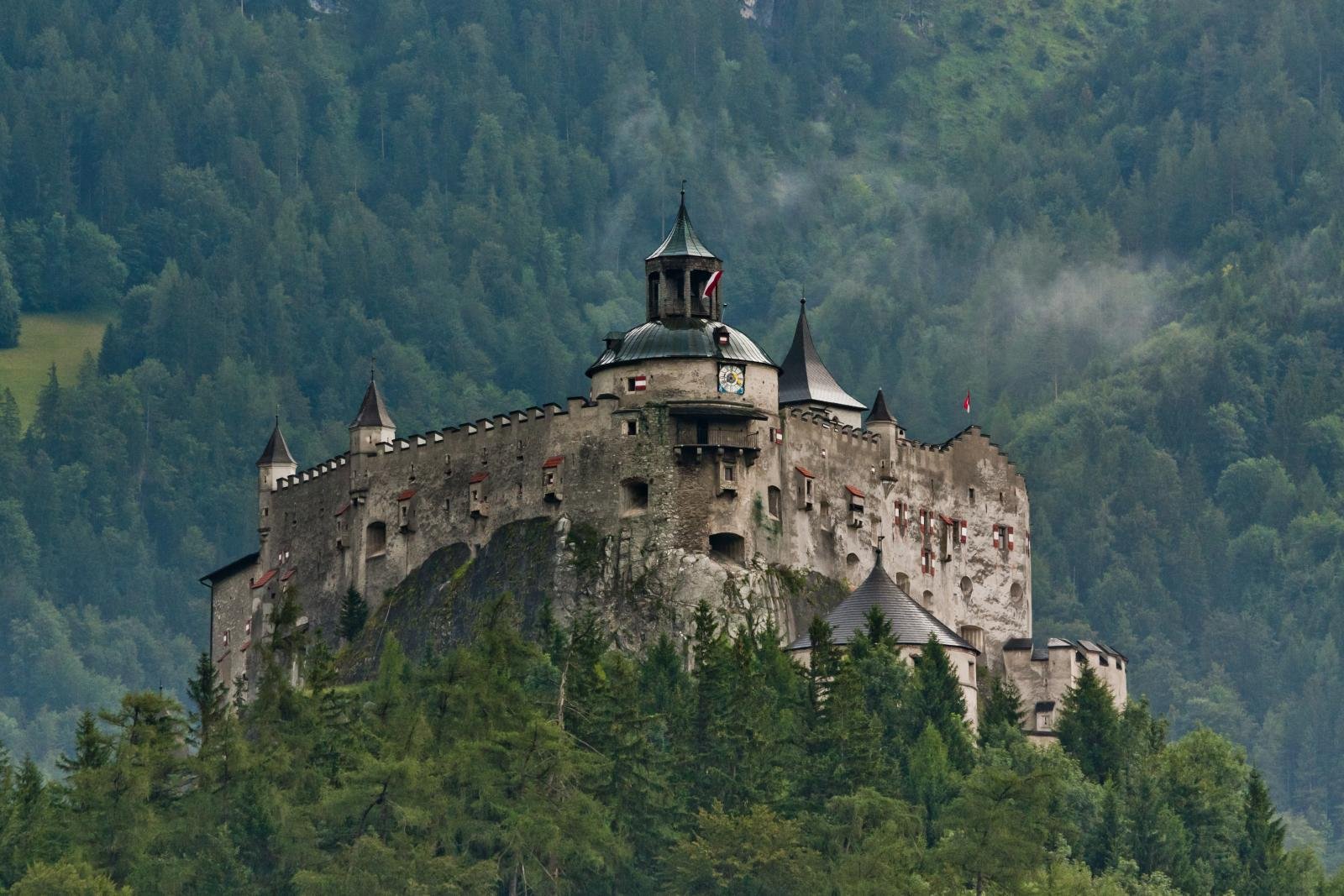
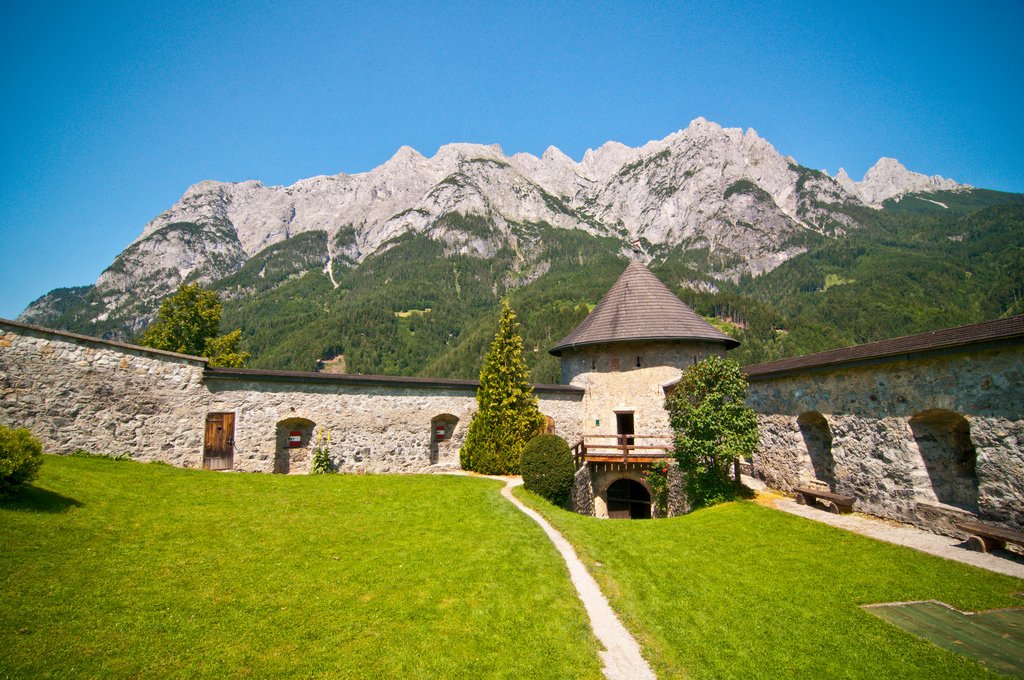
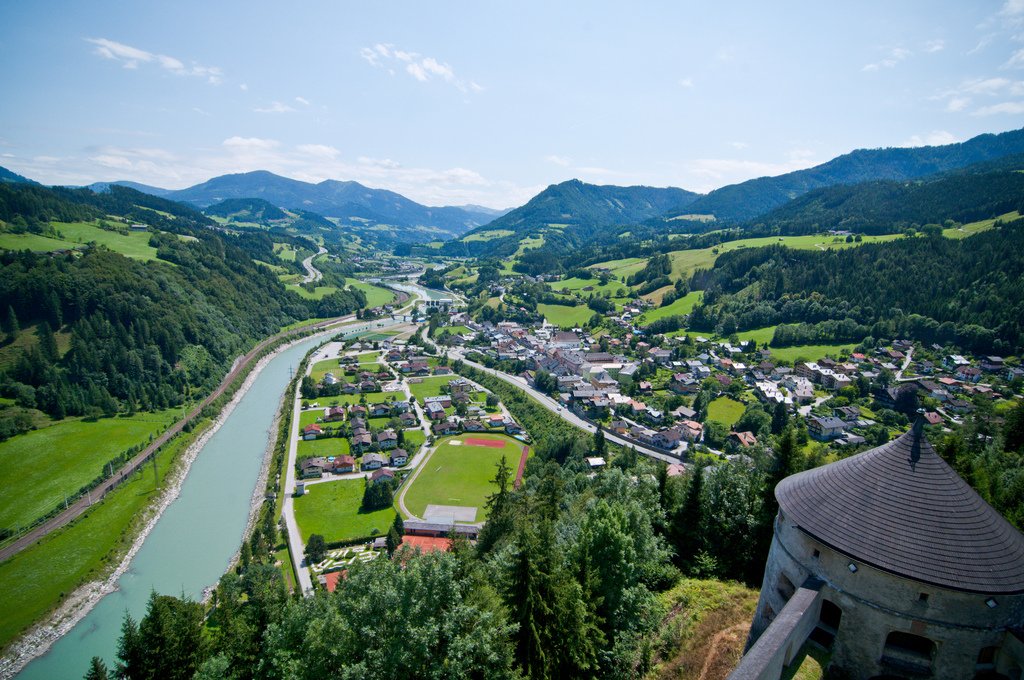
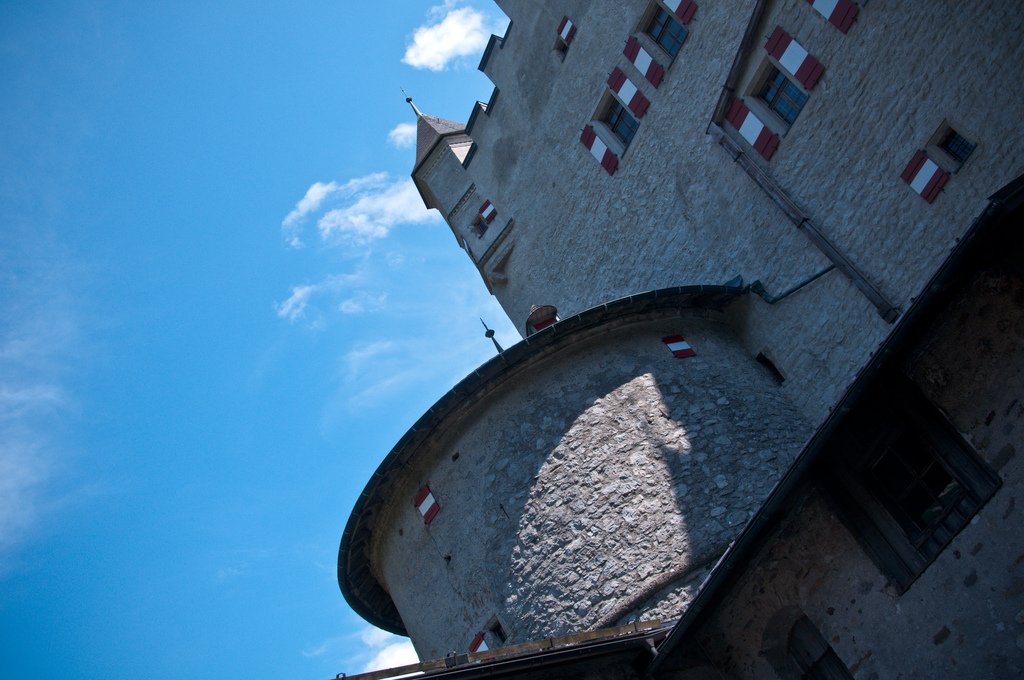
Video: Hohenwerfen Castle
ContentsArchitecture
The oldest part of the castle is the chapel. It still contains fragments of Romanesque walls. Later, in 1565, the Kapellenbastei bastion was added to the chapel. In the center is a statue of “St. Mary with child.”
The castle itself has the traditional shape of a square for all such buildings. However, in this case the square is broken because of the rocky ledge on which the Clock Tower stands. The tower, which was badly damaged during the peasant war, was thoroughly rebuilt in the 16th century.
.
The main part of the castle is the palace at the eastern end of the courtyard. In the southern wing of the palace there is a marble-clad chapel, which, despite all the later rebuilds, has retained its Romanesque forms. The chapel is located below the level of the courtyard and is topped by a tower. The round tower of the Falturm adjoins the northeast corner of the palace. It served as a dungeon, so there is only one way to enter it: through a hole in the floor of the upper floor.
.
The eastern side of the castle is the most vulnerable from a military point of view. It is protected by a powerful bastion, on top of which runs a covered gallery. The second bastion protects the castle from the southeast. From it the road leading to the castle is perfectly visible (and is shot through). The gate, as it is supposed to a self-respecting castle, has lowered bars. Once there was a moat in front of the gate, which could be crossed by a lift bridge.
.
Unfortunately, the interiors of the castle have hardly survived. But the magnificent panoramas that open from the windows of the palace and from the galleries of the bastions more than compensate for this unfortunate shortcoming. However, you cannot say that the castle is empty. It has a museum of weapons and armor, souvenir shops and tavern, recreating the style of bygone eras.
.History
Hohenwerfen Castle was laid out in 1077 by Prince-Bishop Gebhard of Salzburg to protect a strategically important pass. Sometimes, however, the defenders of Salzburg were still defeated and had to flee from the castle. The vicissitudes of military fate do not pass anyone by. Nevertheless, the castle grew and prospered. In the 14th century, the castle was rebuilt under the leadership of Archbishop Eberhard III to adapt it to a new type of weaponry – artillery.
.
Surprisingly enough, the greatest test fell to Hohenwerfen Castle during the Peasants’ War in 1524-1525. In this war, the castle was so severely damaged by the rebels that it was then rebuilt for 20 years. The same peasants and miners who destroyed the castle worked to rebuild it. This was their way of atoning for their participation in the rebellion. The castle that we see now was built at that time and was subsequently rebuilt several times. The last major change in the architecture of the castle was the construction of a water cistern in 1,623. After that, no further special changes were made.
.After the Napoleonic Wars, when Salzburg lost its independence and became part of Austria, the castle was about to be destroyed, but it was defended by Franz II. In 1822, the entire interior of the castle was sold off at auction and the first restoration work in the history of Hohenwerfen began. The castle was then sold and resold, and in 1931 a fire broke out. The castle was rebuilt for several years.
.After the war, Hoenwerfen was most often used as a training camp for the police. In 1987, training there ceased and a museum was established to allow the public in. In 2000, Hohenwerfen Castle was immortalized on a commemorative coin..Tourist information
Hohenwerfen Castle can be reached from Salzburg by car in 20 minutes. You can walk if you wish. There is also a cable car to the castle. The most remarkable thing about this walk will be the stunning views of the castle itself surrounded by mountain ranges and the view of the mountains from the castle galleries.
.There are two museums in the castle. One is quite common to all chivalric castles – it is a museum of medieval armaments. The second museum is unique and worthy of visiting the castle just for the sake of it. It is a museum of falconry. The castle breeds birds of prey and regularly organizes falconry demonstrations..
Besides museums, the castle has a medieval-style souvenir shop and a colorful Austrian tavern. And many people visit the castle dungeon, which has seen many famous prisoners over the centuries. In the dungeon of Hohenwerfen sat such people as Archbishop Adalbert III, Count Albert von Frisach, Styrian Governor Sigismund and Archbishop Wolf Dietrich von Rathenau.
.The castle hosts concerts, exhibitions, booked banquets and weddings with weddings in the local chapel on a commercial basis.
.A cable car ride costs €3 for an adult and €1.5 for children 6-14 years old.
.Entrance to the museum is €10 for adults, €5.5 for children.
.Family tickets can be purchased, which are much cheaper.
.Useful information
Opening hours of the castle:
April: 9.30-16.30 (except Mondays).May-June: 9.00-17.00July-August: 9.00-18.00September: 9.00-17.00October-November: 9.30-16.30.From December to March the castle is closed.
.